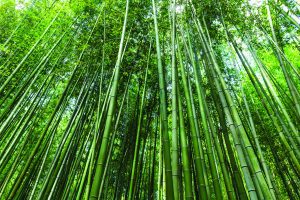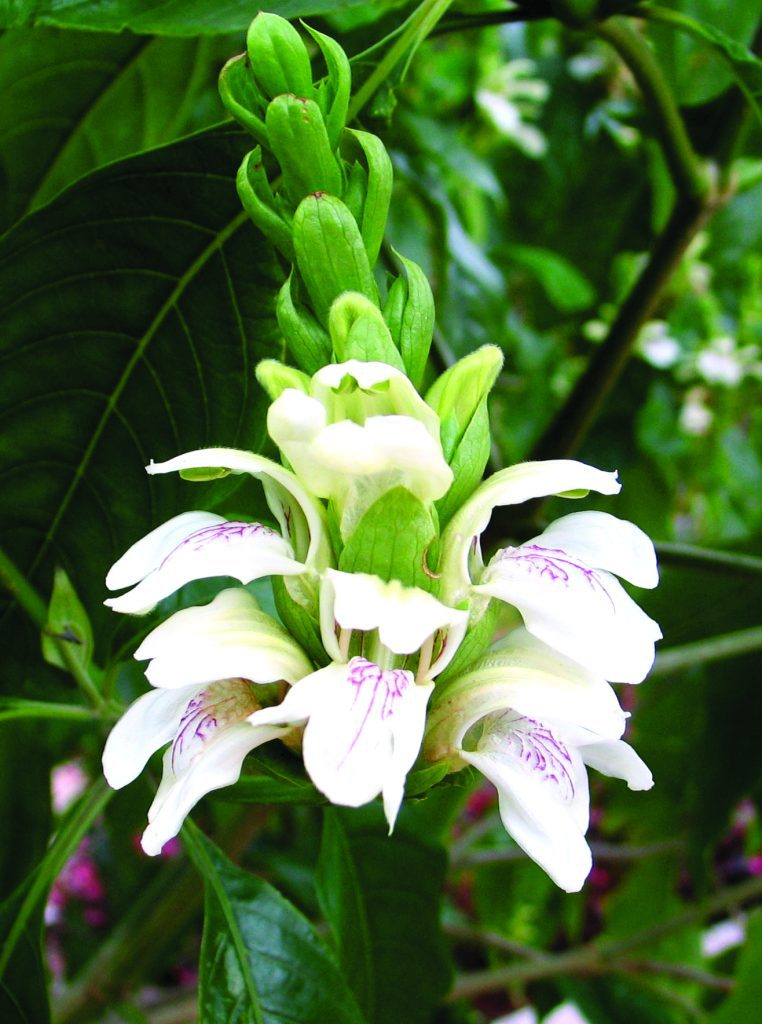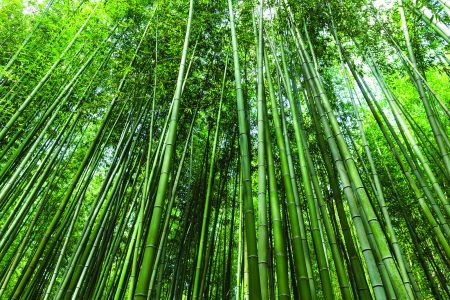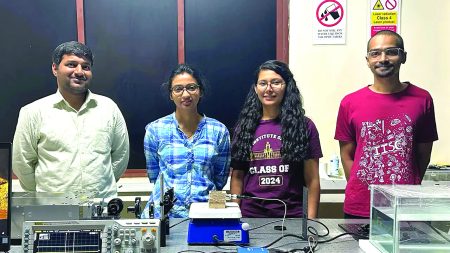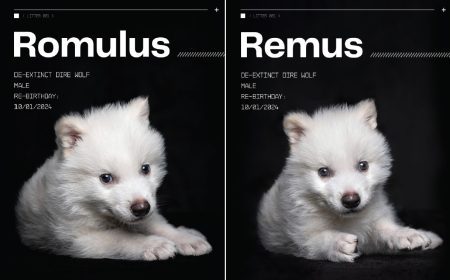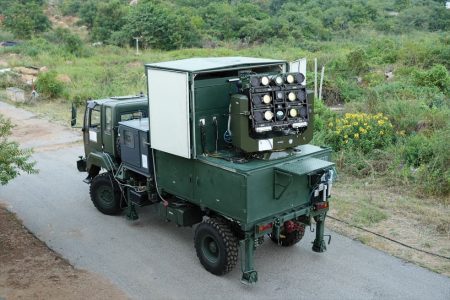HERB HERITAGE: VASA
Vasa, scientifically known as Adhatoda vasica, is a remarkable medicinal herb celebrated in Ayurvedic texts for its potent therapeutic properties. Commonly referred to as Malabar Nut or Vasa in Sanskrit, this plant has been a cornerstone of traditional medicine across India and other parts of South Asia. Beyond its medicinal prowess, Vasa is woven into the tapestry of mythological tales and cultural traditions, making it a symbol of healing and reverence.
The Sanskrit term ‘Vasa’ translates to ‘that which restores health’. Vasa also goes by the names such as Vajidanta and Bhisaka Mata. The plant’s vital role in treating respiratory disorders is emphasised by an old Indian saying: ‘As long as the Vasa plant exists, no person suffering from phthisis should lose hope’. Vasa is mentioned in numerous Ayurvedic literature, including Sushrut Samhita, Charak Samhita, Bhavaprakasha Samhita, Ashtang Hridaya, Ashtanga Sangraha, and so many more.


Forty-three distinct synonyms have been assigned to Vasa in a variety of sources to emphasise its morphological and pharmacological properties. Numerous synonyms of Vasa have been mentioned in various Nighantus like Aatrush, Atrushak, Ainavavasa, Arushak Sinhi, and Sinhasya among others.
INTERPRETATION OF SANSKRIT SYNONYMS OF VASA
1. Vasaka: A shrub which covers the ground with dense foliage
2. Kaphaha: Alleviates Kapha dosha.
3. Karkasha: It has minutely pubescent leaves.
4. Kasanutpatan: Treats respiratory disorders.
5.Dantsatvapradayi: Provides strength to teeth.
6. Bhishak: It cures many diseases.
7. Mata: It supports like a mother.
8. Matrika: It supports/ cares like a mother.
9. Bhishagmata: It supports like a physician and mother.
10. Raktpittaprasadini: Helpful in Raktpitta.
11. Raktamutrajitta: Also treats Raktmutra.
12. Vasadini: It decreases fat thus helpful in obesity.
13. Vajidanta: Its flowers are white like horse teeth.
14. Vrisha: Its flowers have profuse nectar
15. Simhasya: Bilabiate flowers like opened mouth of lion.
16. Simhika: Alleviates number of diseases.
VERNACULAR NAMES
- Sanskrit: Vasa, Vasaka, Acchadayati, Simhasya, Atarusha, Vrisha, Bhishagmata
- English: Malabar Nut
- Hindi: Adosa, Arusha, Bansa, Rus, Adusa
- Tamil: Eadadad, Adathodai
- Bengali: Adulsa, Bakash, Vasok
- Marathi: Adulsa, Adusa
- Telugu: Addasaramu, Adam kabu, Adampaka
- Punjabi: Vamsa, Bhekkar
- Gujarati: Adusol, Aradusi, Aduraspee, Bansa
- Kannada: Adusogae, Adu, Muttada, Soppu
- Malayalam: Adolokam
VASA’S CHARACTERISTICS AND ACTIONS IN AYURVEDA
Rasa (taste): Kashaya (astringent), Tikta (bitter)
Guana (quality): Laghu or light
Virya (potency): Sheeta (cold)
Vipaka (effect after digestion): Katu/Laghu
Karma (action): Kasaghna, Raktasangrahika, Kaphapittahara, and Hridya
Ayurvedic medicine’s description of Vasa indications includes Raktapitta (Purpura/ haemorrhagic disorder), Kasa (cough), Jwara (fever), Kshaya (Phthisis), Kasa (cough), Shvasa (asthma), Rajayakshma (TB), Parshvashula (feign pain), Hritshula (Angina pectoris), and Shotha (oedema).
Vasa’s applications in traditional medicine include fever, rheumatism, bronchitis, asthma, cough, cold, menorrhagia, leprosy, jaundice, stomachic, wound healing, malaria, mumps, heart problems, and delivery difficulties. These are among the conditions for which the leaves are utilised.
Vasa comes in a variety of ayurvedic dose forms, including Vasa Swarasa (A. vasica leaf juice), Vasa Avaleha (A. vasica leaf sugar formulation), Vasa Ghrita (A. vasica leaf clarified butter), and Vasa Asava/ Arista (A. vasica leaf alcohol preparation).
VARIOUS VASA DOSES
Flower powder: 6-12 grams
Powdered leaves: 2.5-5 grams
Panchang kwatha: 20–25 millilitres
Putpaka swarasa: 20–30 mL
Vasa has been found to be an ingredient in 38 formulations intended for external use, primarily for Kushtha, Kilasa, Kitibh, Dadru, Bhagandar, Arsha, Apchi, Pama, Jwara, Shotha, Kaphaj Netrarog, Vatavyadhi, Vatarakta, Shwitra, Romantika, Mudhagrabh Apkarshan, Prameha, Daurgandhya, Sthaulya, Kacchu, Shiroroga, Yonidhawan, and Mukhmandika. Vasa is used in 203 formulations that are recommended for internal administration of diseases such as Jeerna Jwara, Raktapitta, Gulma, Kushtha, Rajyakshma, Arsha, Grahani, Kasa, Vasa, Vatarakta, Yonishool, Pandu, Visarpa, Shandya, Mutraghat, Sandhigata, Ashthigata, Majjagat Vata, Netraroga, Mukharog, Hikka, Shwasa, Swarabheda, Chardi, Ashmari, Amlapitta, Masoorika, Naktaandhya, Prameha, Pramehapidika, Udadrrog, Sheetpitta, Udarda, Kotha, Pradarrog, Sarvastreerog, Rasayan, Aamvata, and Visphota.
Vasa has been used to treat a variety of respiratory and chest infections. Additionally, it is used to treat sexual problems, impotence, and bleeding piles. In Indian traditional medicine, different portions of the plant have been used to cure venereal illnesses, rheumatism, malaria, colds, coughs, sprains, joint and lumbar discomfort, asthma, and oedema.
MEDICINALLY USEFUL PARTS OF VASA
i) Roots: Applying a paste of fresh roots to the belly and vagina just before giving birth makes the process easier. Root decoction has been used as an expectorant, anti-spasmodial, and anthelmintic agent, as well as treating gonorrhoea.
ii) Leaves: A variety of leaf treatments were employed. Various leaf preparations have been used to treat leprosy, wounds, skin conditions, bleeding, haemorrhage, and headaches. Breathlessness, asthma, chronic bronchitis, and all forms of acute cough can be cured by combining fresh leaf juice with honey and ginger juice. Snake bites have been treated with crushed fresh leaves. The leaf powder heated in sesame oil prevents jaundice, earaches, and pus from the ears. Gout, fever, urinary stones, stomach catarrh with constipation, and rheumatic pain and joint dislocation have all been treated with externally warmed leaves.
iii) Flowers: The flowers have been used to treat ophthalmia, colds, phthisis, asthma, bronchitis, coughs, antispasmodics, high fevers, and gonorrhoea. They are also known to have expectorant, anti-asthmatic, and antiseptic qualities. Additionally, the blooms enhance blood circulation and blood heat.
VASA’S EXTERNAL APPLICATIONS
- Paste treats skin conditions and has anti-inflammatory, antibacterial, and analgesic properties. Applying paste locally helps with skin conditions, nerve issues, inflammatory ulcers, and arthritis.
- Oil massage is applied to areas affected by conditions like convulsions and amnesia.
- Leaf juice is used to cleanse the afflicted area in order to eradicate the bacteria that causes ulcers.
SYSTEMIC USES
- The use of Vasa causes vasodilation, stimulates vagus nerves. This increases the heart rate and lowers BP.
- Being astringent and sheeta, it is useful in diarrhoea, dysentery especially with bleeding disorders.
- It acts on rakta dhatu. Therefore, it is very useful in bleeding disorder.
- It is also haemostatic and blood purifier.
- It contracts smaller blood vessels, hence it is useful in bleeding disorders, bleeding piles, menorrhagia and haemoptysis.
- It acts on lungs due to its action on blood flow and vagus nerve action.
- Vasa liquifies the kapha which gets expectorated. It leads to bronchodilation and therefore breathing becomes easier. This is a long- lasting effect and thus Vasa is used in asthma, breathlessness and throat infection.
- Dried Vasa leaves when mixed with dhatura leaves and are smoked can help relieve breathlessness.
- It is a diuretic. Flowers are used in dysuria, burning micturition and other urinary disorders.
*The writer is an Ayurveda physician, DST Woman Scientist A, AIIMS New Delhi, and founder of Pratha Ayurveda.

